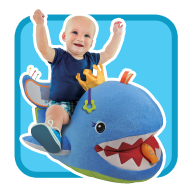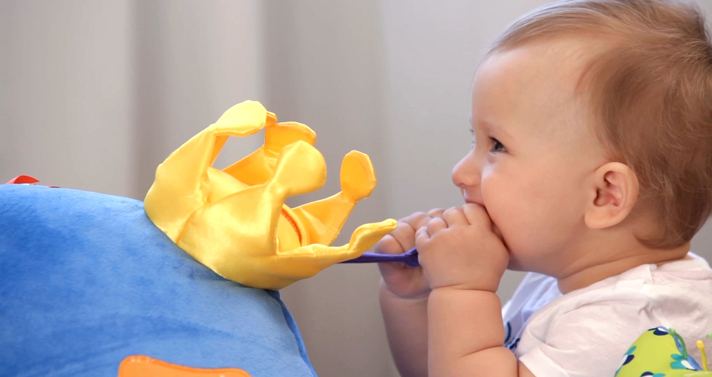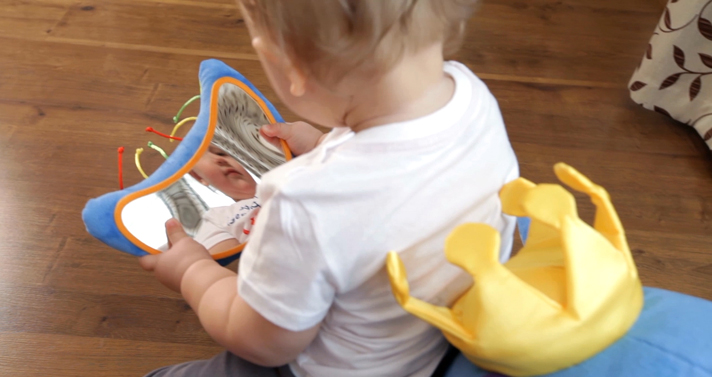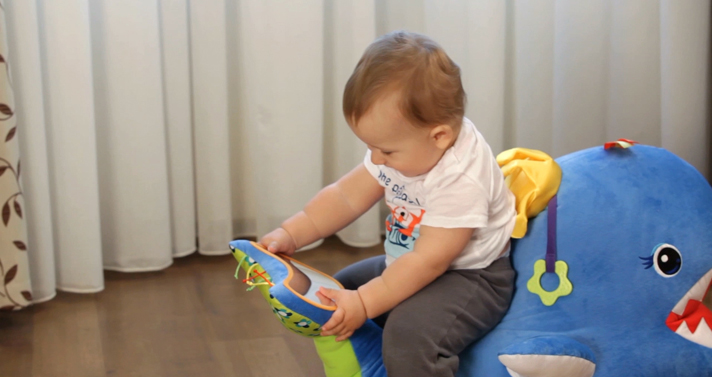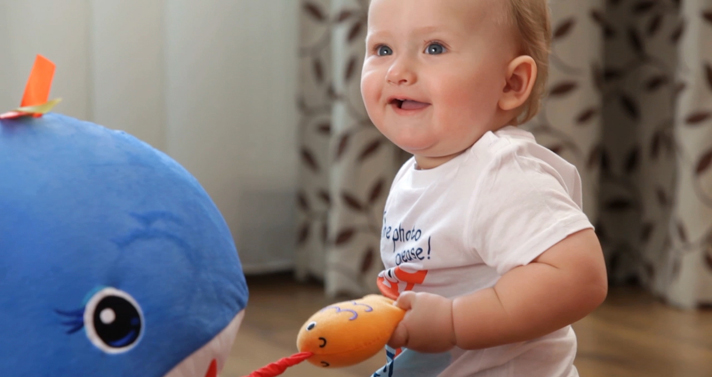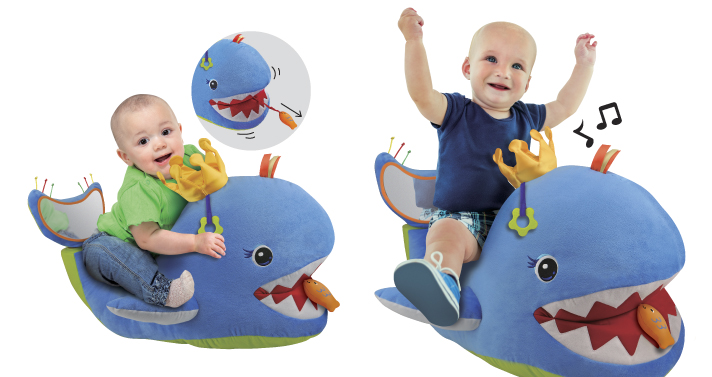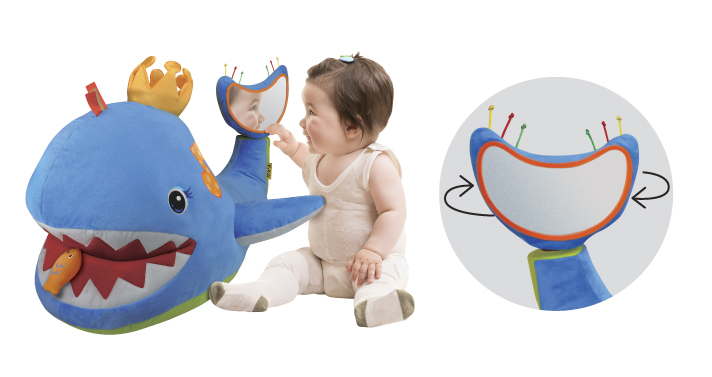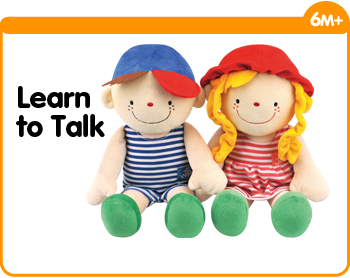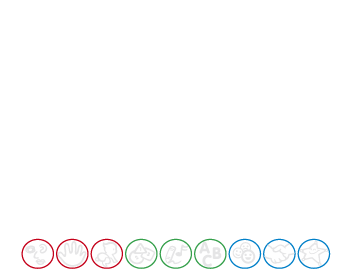Lots of learning with Big Blue Whale
- Sit on the body with head facing the mirror. Find yourself in the mirror.
- Embrace the big tail. Turn the tail with click click sound. Good for your gross motor.
- Explore the different textures with your senses. Enjoy teething with the teether.
- Pull the fish and see it coming out from the big big mouth.
- How many pieces of teeth Big Blue Whale has? Count them.
- There is a musical crown on the head of Big Blue Whale. 6 songs included.
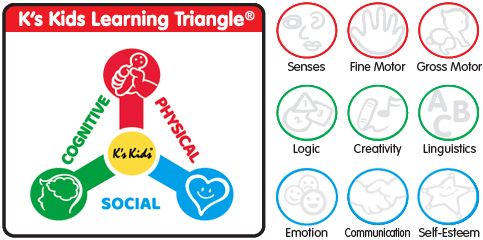






 Senses
Senses
The fundamental senses of seeing, tasting, hearing, smelling & feeling encourage a child's curiosity.
 Fine Motor Skills
Fine Motor Skills
Fine motor skills are those smaller actions between the thumb and fingers or using the toes to wriggle and feel the objects.
 Gross Motor Skills
Gross Motor Skills
Gross motor skills are larger movements involving the arm, leg, or feet muscles or the entire body.
 Logic
Logic
Logical training enables babies to make connections between pieces of information.
 Creativity
Creativity
Colors, shapes, learning how to draw, getting familiar with music and rhythm, all goes to aid the growth of a child's creativity.
 Linguistics
Linguistics
Linguistic Intelligence is the ability to use sound and language for expression and comprehension of others while a child is developing.
 Emotion
Emotion
A healthy child should be able to control and express his emotion, and interact effectively with others with mutual trust.
 Communication Skills
Communication Skills
Good communication skills lead a child to perform cooperative tasks and become productive team members.
 Self-Esteem
Self-Esteem
Self-Esteem is an overall sense of achievement a child feels from the important people around him. Task basis activities could help children to build up a stronger self-esteem with a better judgment about their own worth.
*These are recommendations made under normal circumstances. Parents can determine which activities are most suitable depending on the progress of individual children.
Objective: Hugging - building a sense of security
Method: Big Blue Whale is made from high quality materials. It is soft and comfortable, great for hugging. Hugging also teaches children to care for others.








Objective: Listening and attention training – observing your child’s reaction to sounds
Method: Tap the whale’s crown to activate music, or shake or crinkle him to create sounds from different directions. Observe if your child’s gaze follows the sounds.








Objective: Sense stimulation - touching and feeling
Method: The whale is made from different textures and materials. Encourage children to touch and feel the textures and to chew on the teether.
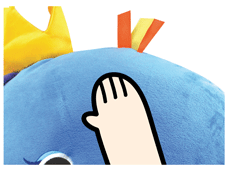











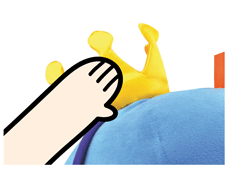











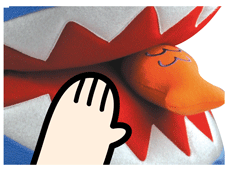











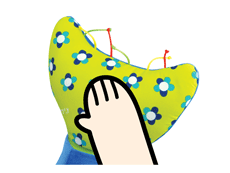











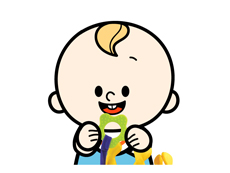











Objective: Listening to music – cultivating positive emotions
Method: Tap the whale’s crown to activate the music. There are six melodies in different rhythms. Allow children to listen to the different melodies in different situations.








Objective: Listening and fine motor skills training – crinkling crinkle paper
Method: There is crinkle paper in the whale’s flippers. Encourage children to crinkle them.








Objective: Gross motor skills training - pressing
Method: Press the whale’s crown to play music.








Objective: Gross motor skills training - pushing and twisting
Method: Encourage children to push the whale’s tail for rattling sounds and to twist it for clicking sounds.
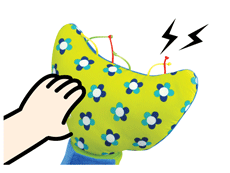























Objective: Gross motor skills training - pulling
Method: Pull the little fish out of the whale’s mouth and it’ll vibrate as it goes back in the mouth.








Objective: Developing self awareness - observing herself in the mirror
Method: Allow your child to observe herself in the mirror. This helps develop her self-esteem.
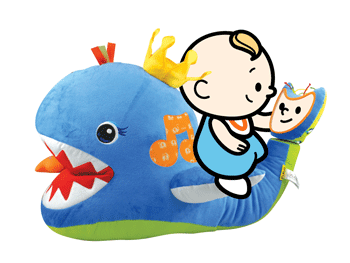











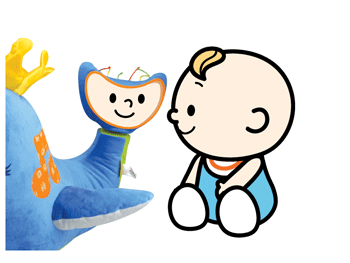











Objective: Learning to sit and ride
Method: Help children sit and ride on the whale. (For safety, place cushions on both sides of the whale.)










Objective: Cognitive training - learning facial features and body parts
Method: Teach children facial features and body parts.
























Objective: Cognitive training – pointing to facial features and body parts
Method: Name a facial feature or body part and encourage your child to point to it.
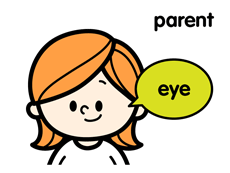











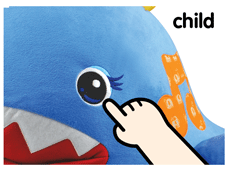











Objective: Cognitive training - learning colors
Method: Teach children different colors.












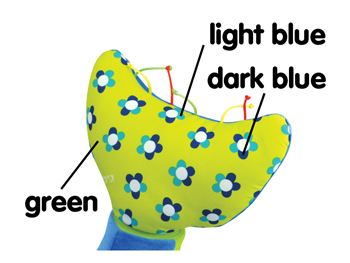











Objective: Cognitive training – pointing to colors
Method: Name a color and encourage your child to point to it.












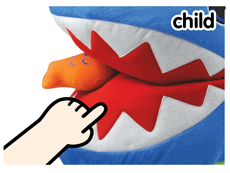











Objective: Cognitive training - learning to count
Method: Teach children to count using the whale’s teeth and the knots on its tail.
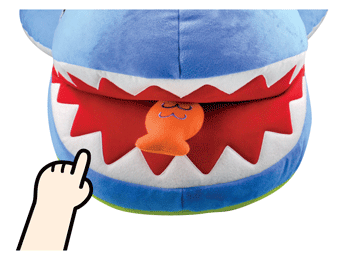











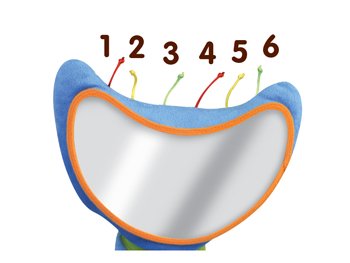











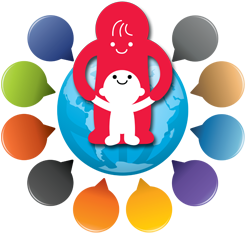
Sharing
We sincerely hope that the guidelines provided by our K's Kids Parents' Support Center will help you make the most of your K's Kids product. We hope that every child with a K's Kids product will benefit from playing and learning from it.
We also believe that every child is unique and full of creativity.
Apart from the learning methods provided here, have you or your child discovered fun and creative ways to play with your K's Kids toys? A different combination of Chain-an-inchworm? An interesting, new way to teach language using Learn to Talk™ ? Or do you simply want to share your feelings and opinions?
To share your views, please use the form below. Attach a photo or video and provide us with a short note. Whatever it is, we earnestly hope that you will share your views with us. Your views may in turn be shared with countless other parents, so that more kids can have fun with their K's Kids toys.
Please do not close this window.















































































